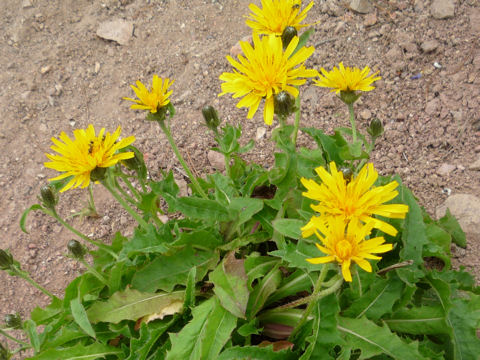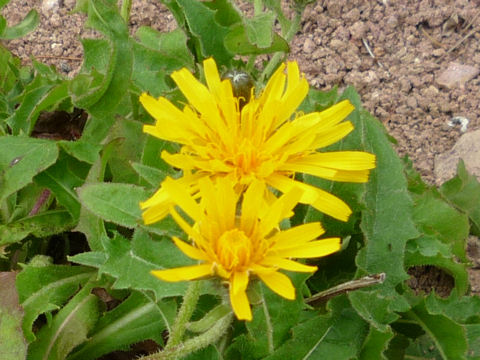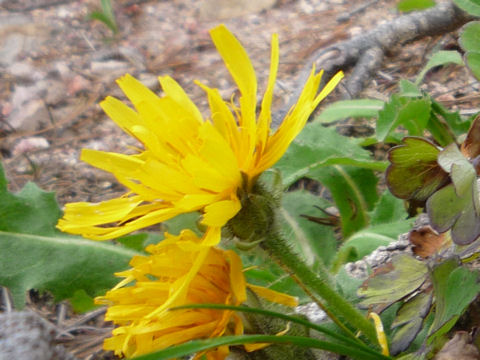 |






|

|
íªÌkC¹ðͶßAkAWAɪzµÄ¢Ü·BRÑÌ»âInɶ¦A³ÍT`QTZ`ÉÈèÜ·Bª¶tÍsK¥ÉHóÉØêÝAstͬ³ßÅݶµÜ·BV©çW²ëAsÉãɼaR`SZ`Ì©F¢ªÔðP`SÂ穹ܷBsâtAäÉÍFÌ·ÑÆFÌÈѪ èÜ·B
|

|
LNÈt^}^^||®Ì½NÅAw¼Í Crepis hokkaidoensisBp¼Í èܹñB
|

|
The "Futamata-tampopo" (Crepis hokkaidoensis) belongs to Asteraceae (the Aster family). It is a perennial herb that is native to Hokkaido of Japan and North East Asia. This herb grows on alpine screes, and can reach 5-25 cm in height. The basal leaves are pinnatisect irregularly, and the cauline leaves are smaller and alternate. The yellow, 3-4 cm across, 1-4 flower-heads bloom on the upper stems from July to August. The stems, leaves and bracts are covered with blackish brown long hairs and white wooly hairs.
|

|
kC¹Î¢S´¢¬u΢xvÉÄA2011N0801úBeB(photo by Aya Suehiro)
|


